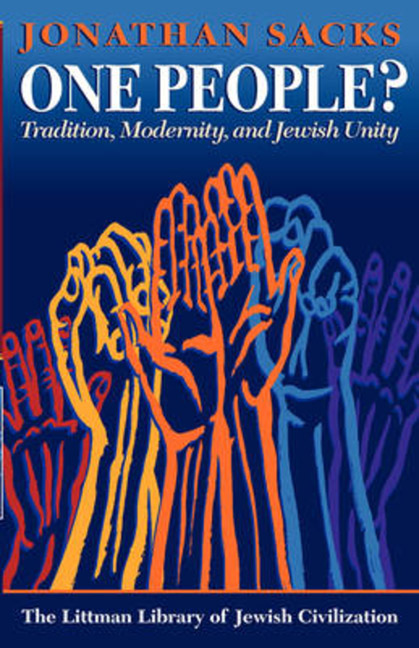Book contents
- Frontmatter
- Dedication
- Preface
- Contents
- Note on Transliteration and Place Names
- Abbreviations
- 1 The Crisis of Contemporary Jewish Thought
- 2 The Birth of the Adjectival Jew
- 3 Orthodoxy, History, and Culture
- 4 Orthodoxy and Jewish Peoplehood
- 5 Tradition and Diversity
- 6 Inclusivism
- 7 A Collision of Consciousness
- 8 Schism?
- 9 The Future of a People
- Bibliography
- Index
9 - The Future of a People
- Frontmatter
- Dedication
- Preface
- Contents
- Note on Transliteration and Place Names
- Abbreviations
- 1 The Crisis of Contemporary Jewish Thought
- 2 The Birth of the Adjectival Jew
- 3 Orthodoxy, History, and Culture
- 4 Orthodoxy and Jewish Peoplehood
- 5 Tradition and Diversity
- 6 Inclusivism
- 7 A Collision of Consciousness
- 8 Schism?
- 9 The Future of a People
- Bibliography
- Index
Summary
TWICE before, the people of Israel came apart. After the reign of Solomon the nation was divided into two, a northern and a southern kingdom. Eventually the northern kingdom was conquered and sent into exile, where, lacking the inner means to survive as a distinct group, its population assimilated and disappeared from the script of Jewish history: the lost ten tribes. After the Babylonian exile, a second struggle took place over several centuries between secular and religious, syncretist and particularist tendencies within Jewry. A period of political autonomy, beginning with the Maccabean revolt and ending with the destruction of the Temple, opened and closed with what in effect were wars of Jew against Jew.
The Jewish people, forged in exile, gaining its purpose in the wilderness, has been able to survive dispersion and powerlessness, passivity and persecution. What it has not been able to negotiate without massive self-inflicted injury is freedom and empowerment. In the modem era, emancipation offered the first, the State of Israel the second. The result has been that the Jewish people is coming apart again.
The present study has focused on only one axis of that disintegration, the intractable differences between Orthodoxy and Reform. This is a problem primarily of the diaspora. But there are at least two other axes that should be considered. One is between religious and secular groups in Israel. This is far more fraught with direct and ugly confrontation: the burning of bus shelters and stoning of cars travelling on the Sabbath by charedim (pietists), retaliatory acts of vandalism against yeshivot by secularists, and an escalating war of words.
Admittedly, these clashes paint an exaggerated picture. For the most part, religious and secular publics live in relative peace. Newsworthy incidents mask the underlying reality of coexistence. None the less, the project of the return to Zion contained, almost from the beginning, deeply opposed expectations. For one group it signalled the return of Jewry to Judaism. For another it meant the liberation of Jewry from Judaism. For the former Israel was a place where the Jewish people might reconsecrate itself away from the assimilatory forces of Europe. For the latter it was the arena within which Jews could develop a national life freed from the ‘abnormality’ of minority status and the need for religion to provide a basis for identity and continuity.
- Type
- Chapter
- Information
- One People?Tradition, Modernity, and Jewish Unity, pp. 196 - 228Publisher: Liverpool University PressPrint publication year: 1993

